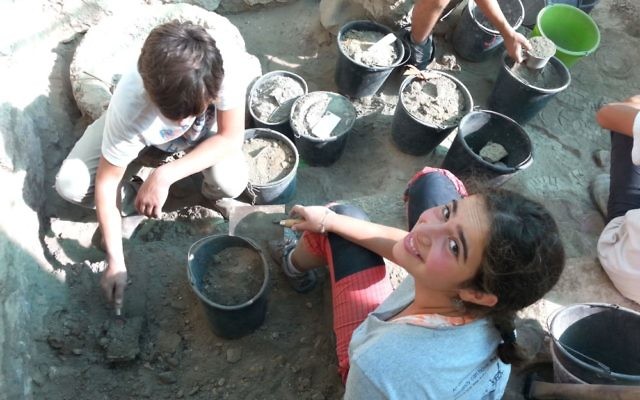Travel Briefs – Birthright Registration Open
Apply for Birthright
The eight-week application period for winter Birthright Israel trips opened Monday, Sept. 12.
The free, 10-day trips are open to Jews ages 18 to 26 who have not taken a peer educational trip to Israel since age 18 and have not lived in Israel since age 12.
Visit www.birthrightisrael.com to start your application. Birthright also runs trips in the summer; registration for those trips will open in February.
Beth Tikvah Trip
Temple Beth Tikvah is planning a trip to Israel in June, and it is open to the community.
Rabbi Alexandria Shuval-Weiner is leading the trip from June 1 to 11, which will include Jerusalem, the Dead Sea, Safed and the Yokneam-Meggido region.
For more information, contact Rabbi Shuval-Weiner at rabbi@bethtikvah.com.
Day Trip to NYC
Chabad of Peachtree City is planning to lead a trip to New York on Oct. 9, the Sunday between Rosh Hashanah and Yom Kippur.
Rabbi Yossi Lew said the group will fly to LaGuardia Airport and take a bus to the gravesite of the Lubavitcher rebbe, followed by brunch, a walking tour of Brooklyn, a visit to the Jewish children’s museum and a meal at a New York restaurant before jetting back to Atlanta.
The cost of the trip is $120 plus airfare. Email Rabbi Lew at rabbi@chabadsouthside.com if you are interested.
Archaeological Garden Launched
Israel established its largest archaeological park at the Kirya Base in Tel Aviv on Sunday, Sept. 11, in a festive ceremony attended by the Israel Defense Forces chief of staff, the director of the Israel Antiquities Authority, and a representative of the Ministry of Jerusalem Affairs and Heritage.
On display are dozens of items from major cities in the ancient world, including a stone that weighs 6 tons from the Kotel.
“The decision to inaugurate an archaeological garden here in the base of the IDF general staff conveys first and foremost an important moral message: Recognition of Israel’s history is essential in building the image of the soldier who knows his past, understands the challenges of the present and is always ready to ensure the future of his people for the sake of future generations,” said Miri Regev, the minister of culture and sport.
Israel Seeks Hotels
To increase the number of hotel rooms and reduce the cost of visiting Israel, the Knesset Finance Committee has approved financial incentives for the construction of hotels in certain parts of the country, on the periphery of large cities and close to Ben Gurion Airport.
Projects in approved areas will be eligible for government grants of up to 20 percent of the total investment. The budget for the grants is 200 million shekels per year ($53 million).
Israel also recently approved a grant program worth up to 33 percent of the total investment in budget hotels.
“This is another important step in reducing the cost of vacationing in Israel and increasing the hotel room supply,” Tourism Minister Yariv Levin said. “Expanding the map will facilitate higher grants for building hotels in the new areas and will lead to a wider range of hotel rooms and the creation of many more jobs throughout Israel.”

Students of the Har Ha-Negev Field School sift organic matter at an archaeological dig in the Avdat National Park.
Byzantine Stable Found
A structure that was used as a livestock stable in the Byzantine period was recently found in an excavation the Israel Antiquities Authority carried out in the Avdat National Park in the central Negev.
The archaeological excavation, with the participation of students from the Har Ha-Negev Field School, was directed by DePaul University’s Scott Bucking and the IAA’s Tali Erickson-Gini.
The stable was constructed in a rough-hewn cave on the mountainside and was used as a service structure by local residents, who appear to have been monks. It was divided into a number of stone-built rooms, whose walls were adorned with painted crosses. Stone basins were probably used for storing food and water for the animals.
A yard-thick layer of manure leaves no doubt that donkeys, sheep and goats lived there in antiquity, Bucking and Erickson-Gini said.




comments